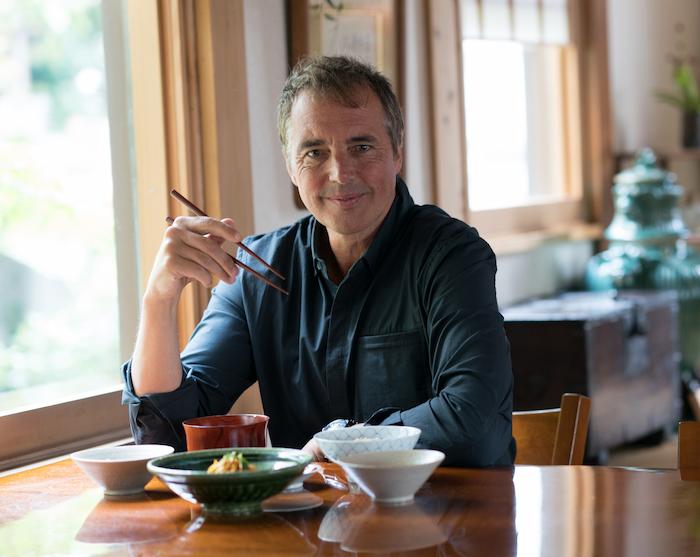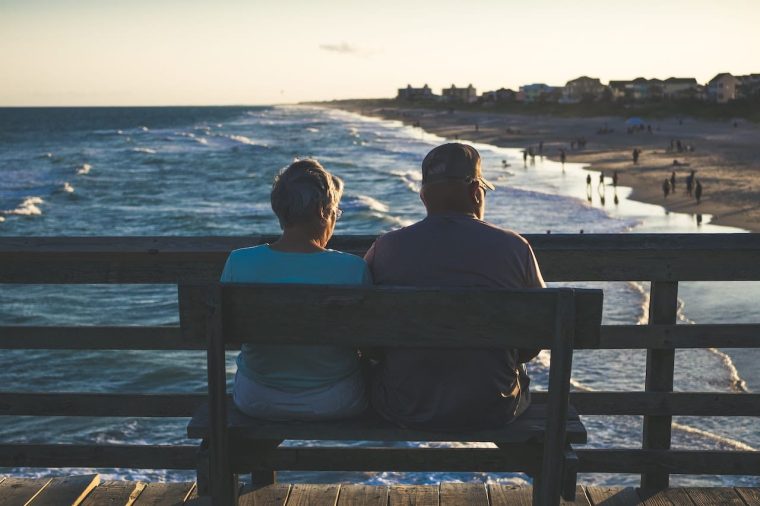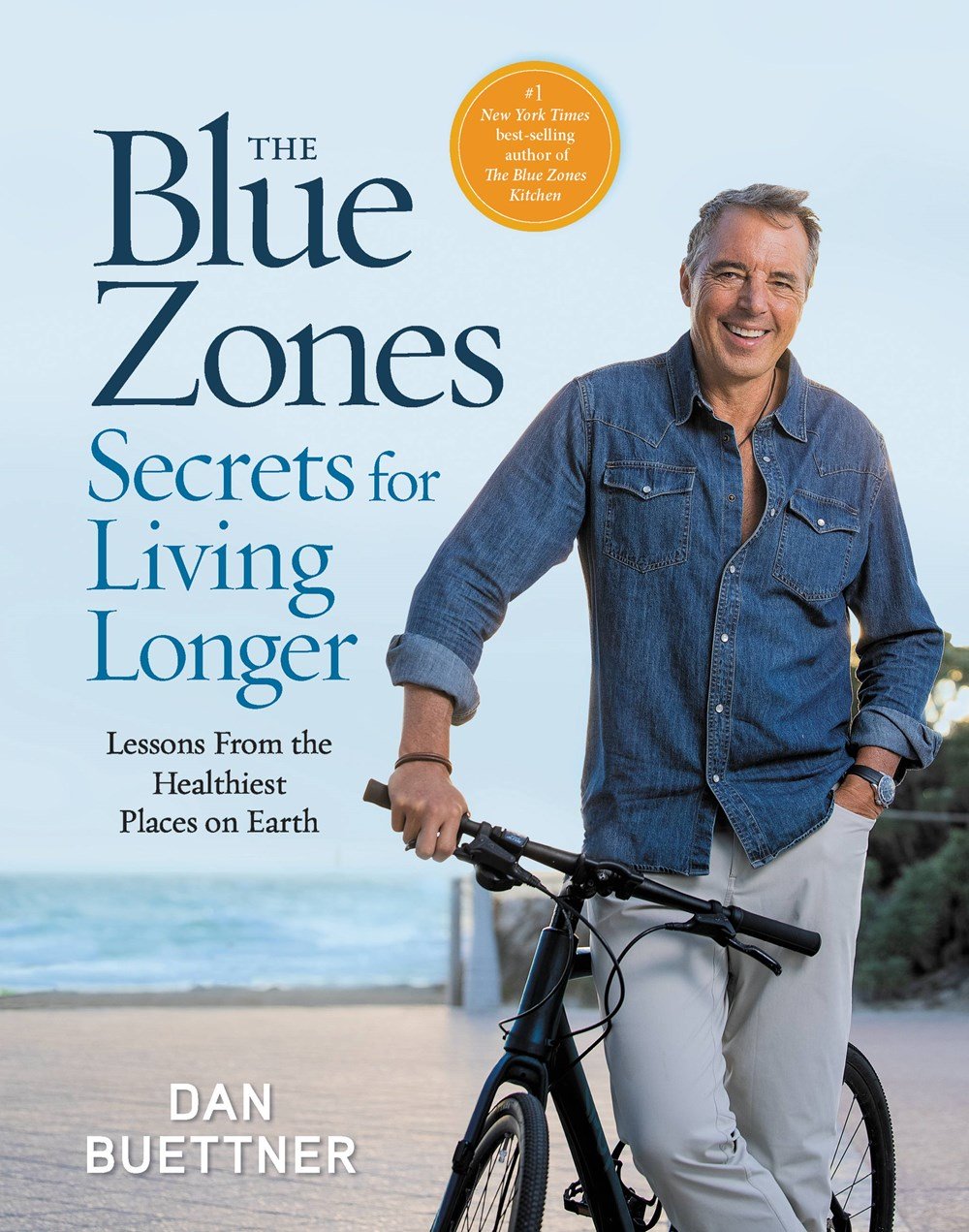Welcome back to Eating to 100, and Happy New Year! ?
I mentioned in the last couple editions how things get weird in December for business on the internet (in which this newsletter is included). Now that we’re more than a week into January, the tone has shifted and normalcy has once again settled upon the land.
So you could be forgiven for thinking that I would approach this edition in the same way—as a return to serious business—but fortunately for you, you’re not quite correct. This is supposed to be a fun read (I think)!
I do take this newsletter seriously, but I’m not here to be your drill sergeant. You’ve got enough other stuff on your plates, enough of your own reasons to get back to work, that I don’t need to push you right now.
I’m sure I’ll get back to the hard-nosed, scientific, nitty-gritty topics soon enough. Today, to ease you into 2024, I’ll be wining and dining you—or at least talking about those two lighter subjects—to illuminate what a lot of people are missing about them.

To start things off, let’s talk vino! ?
I’ll say first that there is an entire world of wine out there, and there’s no way I could faithfully cover everything in a single succinct article. In fact, I can already see how each chunk of this article could be an article of its own (so I will almost certainly return to this subject later).
Also: I know enough to get people started, but I’m not a sommelier or wine expert. I ask your forgiveness in advance if you’re someone who really does know their wine.
This article is a tiny crash course where I’ll answer seven of the first and most essential questions that people ask about wine. That’s why I’ve structured this as a Q&A.
So let’s get into those Qs and As!
1️⃣ A lot of people say drinking a glass of wine a day is good for you. Is that true?
Short answer: yes!
Obviously, there are exceptional groups for whom a glass of wine is not a great idea—like children, designated drivers, people with wine-related allergies, people who choose to be sober, and so on.
As for everyone else? Have at it! ?
Studies have shown that a daily glass of wine is good for your heart health and blood pressure and reduces your risk of diabetes, Alzheimer’s, and potentially even cancer. Plus—as we all know—it’s a pretty good stress reliever, especially with good company.
2️⃣ A lot of those same people specify red wine. Is red wine better for you than white wine and, if so, why?
Short answer: yes. White wine does share a number of benefits with red wine, but those benefits tend to be “diluted” by comparison.
Three quick examples:
- A lot of the antioxidants in wine come from the grapes’ skins, and a key difference between red and white wine is that white grapes typically have their skins removed before fermentation.
- Red wine almost always has more tannins; red grapes have more tannins in the first place and red wine retains a higher proportion of its tannins by virtue of fermenting the whole grape.
- Red wine contains compounds that white wine doesn’t; resveratrol is a big example here, and research suggests that this compound has health benefits that extend so far as fighting cancer.
3️⃣ What’s the healthy limit? What’s the health difference between 1, 2, and 3 glasses of wine?
It’s worth stating first that the answer to the healthy-limit question will depend on each person and their body; note, for example, that the CDC recommends a max of 2 glasses a day for men and 1 glass a day for women, largely because of the assumed difference in size. Whatever your physiology, it’s important to take that into account.
Otherwise, this is one of those thinking-at-the-margin questions, and here’s what I’d say in summary about each of those margins:
? Anyone who endorses wine at all will agree that one glass is okay. This is the safest and most conservative number; nobody disputes the first glass of wine.
?? A good chunk of sources will say that two glasses can be okay—in other words, that there are no long-term drawbacks—so long as you’re not a lightweight, literally or figuratively. Having said that, notice that any such source will stop short of insisting upon the second glass.
??? You’ll find plenty of social sanction for three glasses of wine, but basically no scientific sanction; by the third glass, the marginal benefits are nil and the penalties for extra alcohol (and its extra calories) are quickly rising. I won’t say I’ve never had 3+ glasses of wine, but I generally try not to—and the same is true of blue-zone centenarians. If nothing else, wine hangovers can be brutal.
4️⃣ How do I find a wine that I like? (Are the hoity-toity wine descriptions worth anything?)
The concise answer is “you try a bunch and follow what you like.” ?
There are obviously a lot of ways to do that, but I would recommend a Google search for wine-tasting bars and lounges in your area. I’ve visited a couple of places that allow you to choose from dozens of wines and dispense exactly as much as you want, even just a tiny sip’s worth; picture an indoor gas station with 100 dainty pumps, except the gas is actually wine and there’s comfortable seating. Needless to say, it’s great for tasting purposes and I had a blast.
Oh, and yes: the hoity-toity wine descriptions are worth something, even if they’re lacking in humility. They’re worth something because (A) the specific flavors they mention can give you some idea of what a wine is like and whether you’d enjoy it, and (B) some of what seems pretentious to the average consumer is actually useful wine-tasting vocabulary that you’ll learn as you go.
5️⃣ What’s the deal with wine pairings? Any starter advice there?
Ehh… that’s a big can of worms that I probably shouldn’t open right now. I’ll just say two quick things, seemingly opposed but equally true:
?️ There are reasons for fancy restaurants’ weird fixation on wine pairings. The right pairing really can put a special glow around a meal. Conversely, while I don’t think the wrong wine can ruin a meal, it is certainly true that some wines can clash with, overwhelm, or disappear into the food. Fancy restaurants care about this difference.
?️ Ultimately, you should drink what you like. With the exception of the hoity-toitiest, Michelin-starriest restaurants (where the pairings are dictated in advance), your wine selection is a matter of taste and not etiquette. Don’t drink what you know you don’t like.
6️⃣ What kind of wine should I bring to a party if I’m not a wine person?
If you happen to know your hosts’ preferences, there you go. Otherwise…
Bubbles are easy to like, especially if the occasion is festive or celebratory. Champagne is the classic choice, but prosecco is also popular (it’s very similar and usually not as expensive).
Otherwise, I usually prefer to bring a bottle of red because it doesn’t have to be chilled. Two of the most popular choices are cabernet sauvignon and pinot noir; the former tends to be bolder and deeper in flavor while the latter is mellower and lighter.
7️⃣ To what extent does the price of wine predict its quality?
Short answer: somewhat, but very imperfectly. That’s another big can of worms.
Obviously I can’t tell you how to spend your money, but if the real question here is “how much should I spend on a bottle,” then here are my two quick pointers:
?️ If you’re aiming to spend $10, try to spend $13-15 instead. Basically, there’s a noticeable jump in quality if you spend those 3-5 extra dollars. This logic doesn’t extend nearly so well to the price ranges above it (the $20-40 range often feels like a crapshoot), but it holds pretty true for the $10-20 range.
?️ Don’t spend serious money on wine (for your own consumption) until you know you enjoy that type of wine. In other words: don’t assume that you’ll magically enjoy a certain kind of wine just because it’s (more) expensive. Figure out what kinds of wine you like and explore them before you plunk down the big bucks.

People living in blue zones aren’t actively trying to cultivate habits for long life. Their environments are set up in ways that naturally support healthy behaviors. In this section of Eating to 100, I will share one simple habit you can incorporate into your life. Do it long enough, it becomes part of how you live. Build up enough of these habits, you’ll likely add years to your life and life to your years.
As I’ve said before, how we eat can be just as important as what we eat. And on that note…
Quick! What’s the difference between eating and dining?
There are a handful of differences, but the essence of it is that eating is what we do to survive and dining is the more ceremonious version that we do when we’re thriving.
I think a lot of the Western world has lost touch with the idea of “dining” and what it really means, both literally and in terms of its bigger health implications. If this sounds like a semantic quibble, it is—but there’s a bigger point afoot, so bear with me for a moment.
I can think of four misconceptions that a lot of us Westerners have about “dining” nowadays:
1️⃣ The notion that “dining” refers exclusively to dinner. In a strict sense, yes, this is true (because you can see how the words are related). But in conventional usage, “dining” refers more to ceremony than it does to any specific meal—and to validate that, just notice that a lot of “diner food” is actually breakfast food.
2️⃣ The notion that you have to go out to a restaurant to “dine.” We certainly use the word that way, but no: you can dine out OR dine at home! Again, the main difference is (in a word) ceremony.
3️⃣ The notion that “dining” is inherently pretentious, stuffy, and/or expensive. George Carlin once joked that the word “gourmet” means you’re paying an extra 40%, and I think people get the same impression here; after all, fancy restaurants call it “fine dining,” not “fine eating.” And when you go out to a fancy restaurant, yes, the ceremony of it is a lot of what you’re paying for—but to the extent that “dining” can be done at home, it doesn’t have to cost more and it doesn’t have to be any more pretentious than you want it to be.
4️⃣ The notion that “dining” makes the same meal take a lot longer. In this case, I mostly take issue with the “a lot” part. Dining inherently takes longer than eating, yes, but that doesn’t mean it has to stretch on forever; you can eat a meal the right way and still be reasonably efficient if that’s important to you.
This fourth one isn’t really a misconception per se, but it is certainly missing the point somewhere. Why are we always in such a rush? Why is eating a meal treated like a banal, obstructive task to the rest of our lives? Eating meals is one of the best parts of life, and “dining” plays a big role in helping us appreciate that.
On one hand, I feel pedantic and nitpicky for raising these points at all. But on the other hand, I think our neglect of “dining” (and the fact that the above points don’t go unsaid) is indicative of something bigger, namely our nutritional habits and our personal relationships with food.
People in the blue zones tend to have pretty consistent dining habits. They incorporate little elements of ceremony and ritual, they involve other people in their meals, and they have their favorite spots and dishes to return to. Perhaps most importantly, they’re consistent about it. They believe deeply that meals are worth stopping for, that they should be treated as minor life events and not refueling tasks.
I won’t say that you should spend more money going out to eat, and I definitely won’t issue a blanket nutritional endorsement for restaurants (because, unless they say otherwise, their job is to make food tasty above all else). In fact, my hope is that most of your thinking on this topic manifests itself in your own home, at your own table.
So, in closing, here are three pieces of advice for helping yourself dine well at home:
- Make the dinner table a place you’d want to be. If I’m being direct, I mostly mean that you want to avoid using the table as a “dump zone” where everyone leaves their crap when they come home. If that becomes a habit, it also becomes an excuse not to use the table—at which point “dining” and its benefits become all the more elusive.
- Invest in your place settings. I’m not saying you need to spend a lot of money, or any money at all; by invest, I more mean “make each place setting a spot you’d want to sit, or at least a spot you’d enjoy looking at.” Place settings are easy to dismiss by any macho utilitarian standard (because there’s still a solid table beneath them), but setting the table is one of the simplest tasks in the world and it makes a huge psychological contribution to the little “event” you’re trying to create.
- Count your blessings. Without specifically prescribing religion or prayer, some version of “saying grace” does a lot both to establish mealtime rituals and to imbue meals with the meaning that they should have more often. If you’re not the praying type, I would suggest gratitudes: going around the table and having each person name one thing they’re grateful for and why. Either way, remember that doing it out loud is part of the point; if we rely on ourselves to stop and think about it silently, we probably just won’t.

Dutch Apple Pie Bars
Ingredients
2 1⁄4 cups rolled oats, divided
1 cup unsweetened plant-based milk
4 tablespoons maple syrup, divided
2 teaspoons ground cinnamon
1 apple, peeled, cored, and chopped
1 teaspoon vanilla extract
1⁄4 cup ground flaxseeds
1 cup plus 3 tablespoons water, divided
1⁄4 cup macadamia nuts
1⁄2 cup whole-wheat flour
The Method
- Preheat the oven to 375°F.
- In an 8-by-8-inch baking dish, mix together 2 cups of oats, the plant-based milk, 2 tablespoons of maple syrup, the cinnamon, apple, vanilla, flaxseeds, and 1 cup of water.
- In a blender, pulse the macadamia nuts to a meal-like texture.
- In a medium bowl, mix together the whole-wheat flour, macadamia nuts, the remaining 1⁄4 cup of oats, remaining 2 tablespoons maple syrup, and 3 tablespoons water to form a loose dough. Crumble the mixture over the top of the oatmeal mixture.
- Bake for 35 minutes, or until the top is crispy. Let cool for 10 minutes to set, then cut into 4 squares. Refrigerate for up to 4 days.






